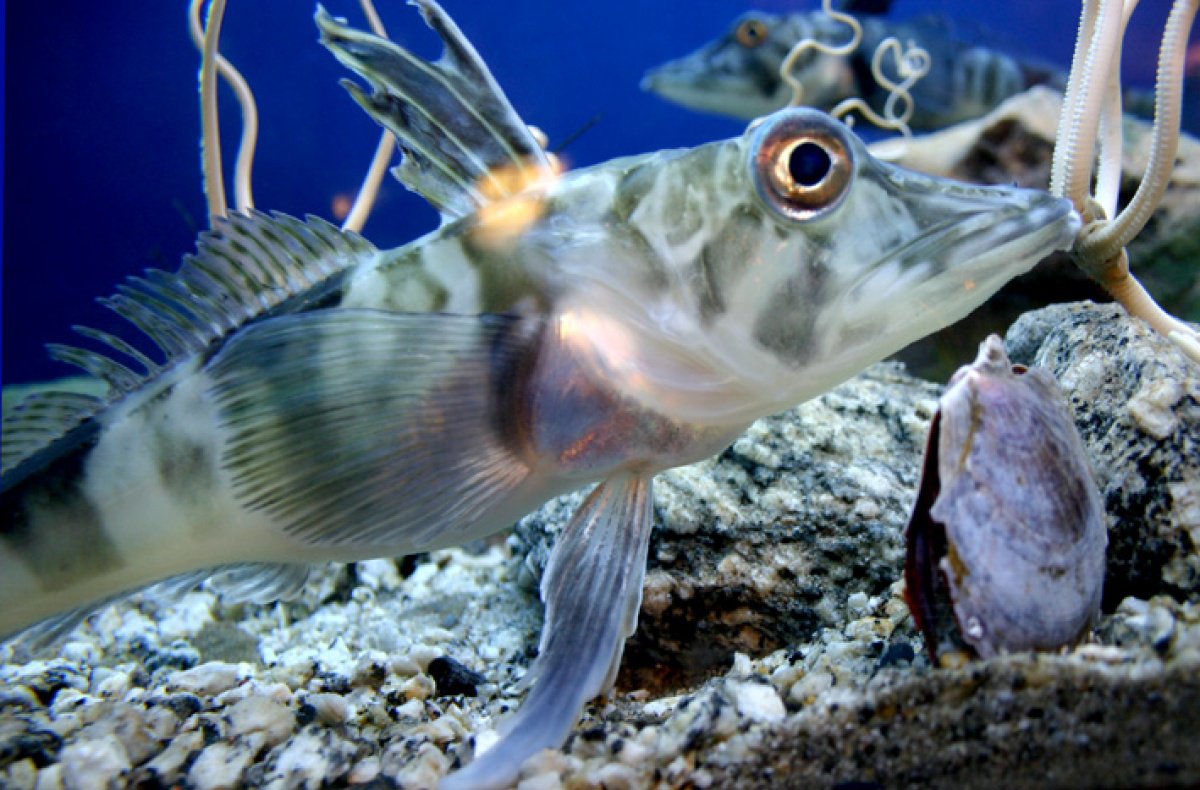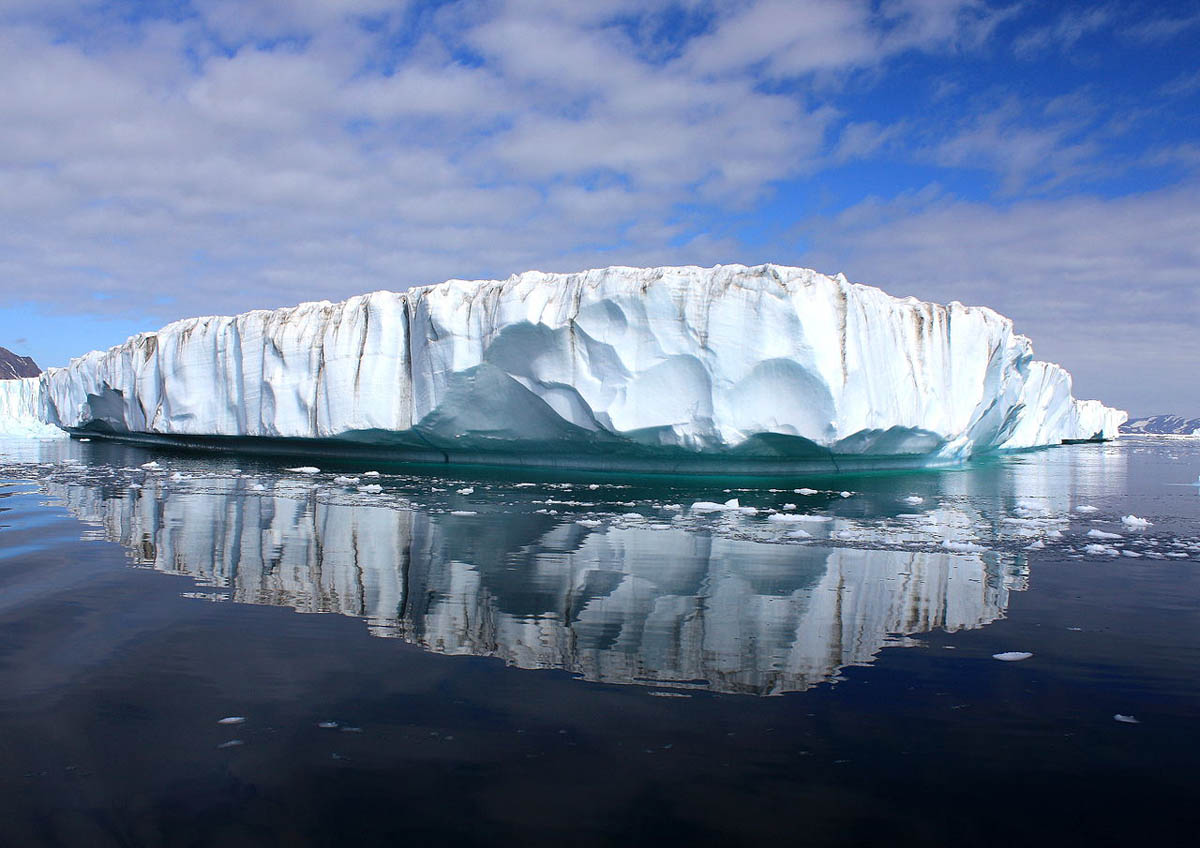Blood and ice: how Antarctic fish lost hemoglobin, but survived

In 1928, a biologist named Ditlef Rustad (Ditlef Rustad) caught an unusual fish on the shore of Bouvet Island in Antarctica. The “white crocodile fish,” as described by Rusted, had large eyes, a voluminous mouth full of teeth, and transparent fins that looked like long feathers. The fish was very pale, in some places its body was as white as snow, while other parts of the body were almost transparent. Norwegian whalers in the 19th century told that in far Antarctica, on the island of South Georgia in the southwestern part of the Atlantic Ocean, strange fish with colorless blood are found, which they dubbed "bloodless" and "ice". And now these stories, which were considered by scientists to be fiction, turned out to be true.
When Rusted conducted a study of a fish, he realized that her blood was almost colorless - there was not a drop of red anywhere. Its gills were also strange: painted white, they resembled yogurt in consistency, if such a comparison can be made. The same cod has red gills like most other fish. All thanks to the large number of blood vessels that permeated this organ. In protein-colored fish, the net of vessels is generally thicker than in ordinary fish, especially in the gills.
Lack of red blood cells? How is this possible?
In the gills, as is known, the blood is saturated with oxygen, after which oxygen is carried throughout the body. Therefore, no matter what color the fish is, its gills must be red, or at least dark — and not completely white, like those of strange Antarctic fish.
')
A little later, Joan Ruud and other researchers explained why this is the case. The fact is that this fish, which was called “ice fish” (Champsocephalus gunnari), turned out to be a representative of the fish of the family Channichthyidae, almost all of whose representatives are deprived of hemoglobin and red blood cells. It is hemoglobin and red blood cells that we owe to the fact that our body receives oxygen, capturing it from the atmospheric air.

Initially, scientists decided that the absence of hemoglobin is an adaptation to ultra-low temperatures and oxygen-rich supercooled water in this region. Indeed, there is a lot of oxygen in the water of the region where the fish lives - it is absorbed almost by itself. Why, one wonders, does the fish have these blood cells when oxygen already goes into the gills without any problems? And experts came to the conclusion that these are all evolutionary changes that allowed fish to adapt to extreme temperatures.
But it turned out that everything is a little wrong. Some time later, scientists found that the loss of hemoglobin is not an adaptation at all. Rather, it is a genetic mutation with not too positive changes for the species or even the whole family. Since the blood of a fish without hemoglobin is capable of carrying only 10% of the oxygen that is usually transported by the red blood cells of tropical fish, the “ice” fish had to completely redraw its body in order to survive.
This species managed to survive in spite of everything due to a number of circumstances. Icefish live in the Southern Ocean, washing the Antarctic. Flows block the region from getting warmer water here. For this reason, the water here is always cold. Its temperature ranges from 1.5 degrees Celsius in the summer to - 1.8 degrees Celsius in the winter (as you know, sea and ocean water freeze at temperatures well below zero).
And the fish had to develop a special protein-freeze that protects animals from the formation of ice crystals in their blood during the fall in water temperature below zero. The 16 species of fish in Antarctica belong to the family Channichthyidae, which, in turn, is part of the Notothenioidei. And among all the other nototenivy, only this fish does not have hemoglobin in the blood. By the way, ice fish and nototenie prevail in the Southern Arctic Ocean - they make up 35% of all fish species and form 90% of the biomass in the region.
Genetics analyzed the DNA of icefish with the DNA of representatives of fish species with red blood. This study was conducted by William Detrich of Northeastern University . Detrich and his colleagues discovered genes that led to specific mutations. In fact, one of the genes that is responsible for the "assembly" of the hemoglobin molecule was lost by ice fish.
Along with hemoglobin, in the course of evolution, protein proteins lost myoglobin, which carries oxygen in the skeletal muscles.
As mentioned above, until recently, the loss of hemoglobin and red blood cells by ice fish was considered an adaptation to cold water. Since no vertebrate in the world has ever lost hemoglobin and red blood cells, scientists have concluded that the loss of red blood cells was a response to a changing environment. When the temperature drops (meaning the long-term process), animals with “liquid blood”, which is easier to circulate through the vessels, have the advantage. And since red blood cells are large enough cells, they in some sense interfere with this process. Most species of fish that live in cold climates have much less red blood cells in their blood than their relatives living in warm waters. Plus, some types of fish can reduce red blood cell levels during the winter in order to conserve energy. All this is true.
But Christine O'Brien of the University of Alaska at Fairbanks and colleagues decided to test the suggestion of adaptive changes in ice fish. In the results of the study, the researchers indicated that icefish have a larger heart and blood vessels than other nototenoid fish. Despite the fact that blood circulates through the vessels of icefish more actively, because it lacks red blood cells, fish have to pump huge amounts of blood to deliver sufficient oxygen to all tissues and organs.
As a result, ice fish, according to scientists, spends two times more energy on the blood circulation process than its relatives. The work of the heart at rest in the usual arctic fish takes about 5% of the energy that the whole body spends. In ice fish, this figure rises to 22%. Some organs of transparent fish are riddled with a thicker network of blood vessels than other fish. In particular, this applies to the eyes of ice fish.
As you can see, this can hardly be called a profitable adaptation acquisition aimed at saving energy. It leaves, on the contrary, more than in fish species with red blood. That increase in the heart and expansion of the network of blood vessels, yes, is already a consequence of the evolutionary process that allowed this strange fish to survive. Energy saving is performed due to the presence of other mechanisms. For example, the fish have no kidney bodies. Removal of poisonous substances in icefish is performed by special secretory cells of the renal tubules.
In addition, ice fish have a higher volume of mitochondria, at a quantity similar to those of other related fish species. In the mitochondrial membranes of albumens, a higher ratio of lipids to proteins. This is probably due to the specific protein regulator of mitochondrial biogenesis PGC-1α *. PGC-1α is a transcriptional coactivator and central to the formation of mitochondria in cells. It has recently been discovered that PGC-1α regulates the composition and function of individual mitochondria and their oxidative metabolism. The increase in oxidative metabolism is associated with an increased work of PGC-1α, which is accompanied by an increase in reactive oxygen species (ROS) in mitochondria. But this protein is also a powerful regulator of ROS removal, because a high level of PGC-1α triggers the expression of numerous antioxidant enzymes.
Most of the time the lees have to spend motionless. Oxygen from water, these fish can absorb and through the skin.
Blood ice - and no problems
About 25 million years ago, the Southern Arctic Ocean began to cool. By the way, the Southern Arctic Ocean is the conventional name for the waters of three oceans (Pacific, Atlantic and Indian), surrounding Antarctica and often distinguished as the “fifth ocean”, which, however, has no clearly delineated northern islands and continents.
So, when cooling ocean waters in this region, a large number of animal species died, which could not adapt and develop special antifreeze proteins or adapt to cooling in some other way. Those species who could do this survived.
Ice crystals form in the same icefish - this is deadly for many other animal species, but not for this species. The fact is that the special protein does not allow the ice cubes that have already appeared to become the center of crystallization, which would lead to the complete freezing of the fish. Blood and extracellular fluid remain fluid. This feature allows ice fish to feel good at the South Pole.
Antifreeze protein is called AFGP (antifreeze glycoprotein). It is probably derived from the pankeratic trypsinogen-like protease. The protein is able to bind to microscopically small ice crystals, preventing their growth.
Bleachki (icefish is also called so) is completely frozen only at - 6 degrees Celsius.
Man creates problems for the lees

Global warming of the Earth’s climate causes the waters of the Southern Arctic Ocean to become warmer and more acidic. Food for white fish (as a rule, it is detritus that appears in the water during the melting of pack ice) becomes smaller. The squirrels are more sensitive to climate change than their red blood relatives. Ichthyologists believe that this species of fish can exist only in cold water in the polar regions and only at a certain temperature range. In any other regions, icefish features will lead to its quick death.
If the warming continues - and this is most likely the case, then the lees will either have to adapt again, “reinventing” red blood cells again, or become completely extinct, leaving nothing behind. Of course, I would like to hope that this unusual and strange fish can survive even in the conditions of a again changing climate.
Source: https://habr.com/ru/post/370065/
All Articles